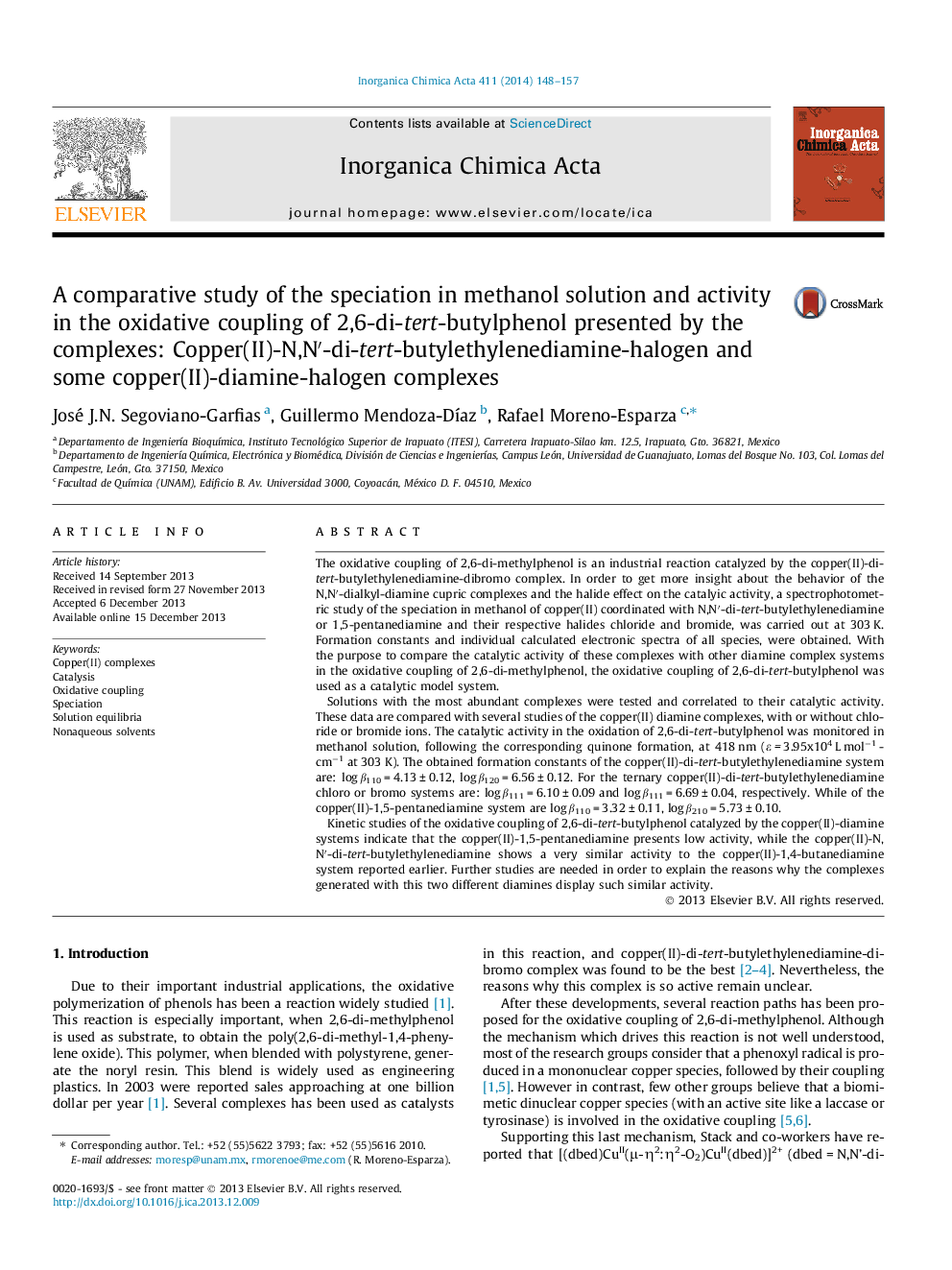| Article ID | Journal | Published Year | Pages | File Type |
|---|---|---|---|---|
| 1306984 | Inorganica Chimica Acta | 2014 | 10 Pages |
•We determined the formation constants of several copper(II) complexes with diamines.•The catalytic capacity of these complexes was studied and evaluated.•We observe a correlation among the catalytic activity and the speciation behavior.•These complexes show different activity in the oxidative coupling reaction depending on their chain size.
The oxidative coupling of 2,6-di-methylphenol is an industrial reaction catalyzed by the copper(II)-di-tert-butylethylenediamine-dibromo complex. In order to get more insight about the behavior of the N,N′-dialkyl-diamine cupric complexes and the halide effect on the catalyic activity, a spectrophotometric study of the speciation in methanol of copper(II) coordinated with N,N′-di-tert-butylethylenediamine or 1,5-pentanediamine and their respective halides chloride and bromide, was carried out at 303 K. Formation constants and individual calculated electronic spectra of all species, were obtained. With the purpose to compare the catalytic activity of these complexes with other diamine complex systems in the oxidative coupling of 2,6-di-methylphenol, the oxidative coupling of 2,6-di-tert-butylphenol was used as a catalytic model system.Solutions with the most abundant complexes were tested and correlated to their catalytic activity. These data are compared with several studies of the copper(II) diamine complexes, with or without chloride or bromide ions. The catalytic activity in the oxidation of 2,6-di-tert-butylphenol was monitored in methanol solution, following the corresponding quinone formation, at 418 nm (ε = 3.95x104 L mol−1 cm−1 at 303 K). The obtained formation constants of the copper(II)-di-tert-butylethylenediamine system are: log β110 = 4.13 ± 0.12, log β120 = 6.56 ± 0.12. For the ternary copper(II)-di-tert-butylethylenediamine chloro or bromo systems are: log β111 = 6.10 ± 0.09 and log β111 = 6.69 ± 0.04, respectively. While of the copper(II)-1,5-pentanediamine system are log β110 = 3.32 ± 0.11, log β210 = 5.73 ± 0.10.Kinetic studies of the oxidative coupling of 2,6-di-tert-butylphenol catalyzed by the copper(II)-diamine systems indicate that the copper(II)-1,5-pentanediamine presents low activity, while the copper(II)-N,N′-di-tert-butylethylenediamine shows a very similar activity to the copper(II)-1,4-butanediamine system reported earlier. Further studies are needed in order to explain the reasons why the complexes generated with this two different diamines display such similar activity.
Graphical abstractOxidative coupling of 2,6-di-methylphenol, remains as a very important industrial reaction, which has not been completely understood. We have employed several related cupric complexes to catalyze a model reaction: the oxidative coupling of 2,6-di-tert-butylphenol, the activity is correlated with the most abundant copper species in solution. Discussion about their speciation and some remarkable effects regarding the catalytic effect induced by some of the complexes, are presented.Figure optionsDownload full-size imageDownload as PowerPoint slide
